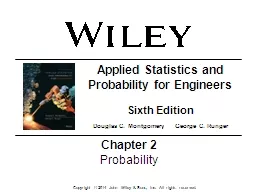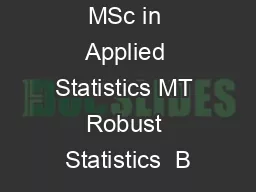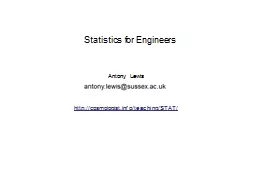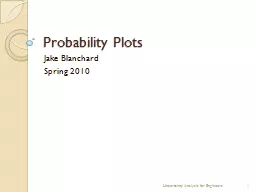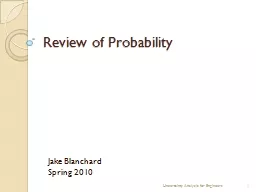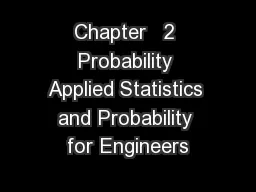PPT-Chapter 2 Probability Applied Statistics and Probability for Engineers
Author : liane-varnes | Published Date : 2018-11-09
Sixth Edition Douglas C Montgomery George C Runger Chapter 2 Title and Outline 2 2 Probability 21 Sample Spaces and Events 211 Random Experiments 212 Sample Spaces
Presentation Embed Code
Download Presentation
Download Presentation The PPT/PDF document "Chapter 2 Probability Applied Statisti..." is the property of its rightful owner. Permission is granted to download and print the materials on this website for personal, non-commercial use only, and to display it on your personal computer provided you do not modify the materials and that you retain all copyright notices contained in the materials. By downloading content from our website, you accept the terms of this agreement.
Chapter 2 Probability Applied Statistics and Probability for Engineers: Transcript
Download Rules Of Document
"Chapter 2 Probability Applied Statistics and Probability for Engineers"The content belongs to its owner. You may download and print it for personal use, without modification, and keep all copyright notices. By downloading, you agree to these terms.
Related Documents

